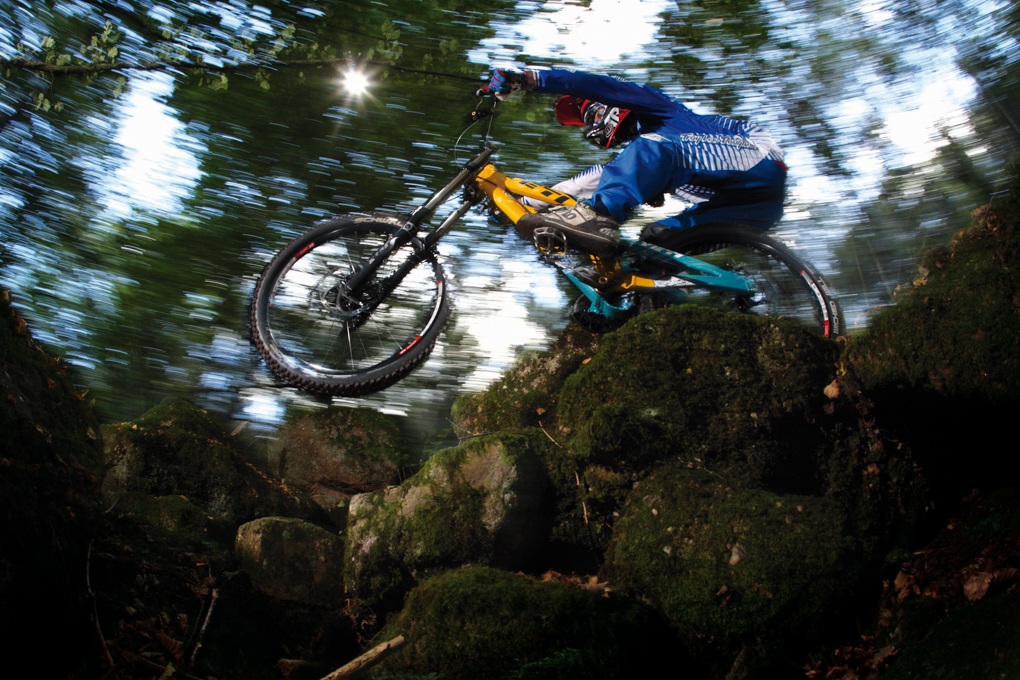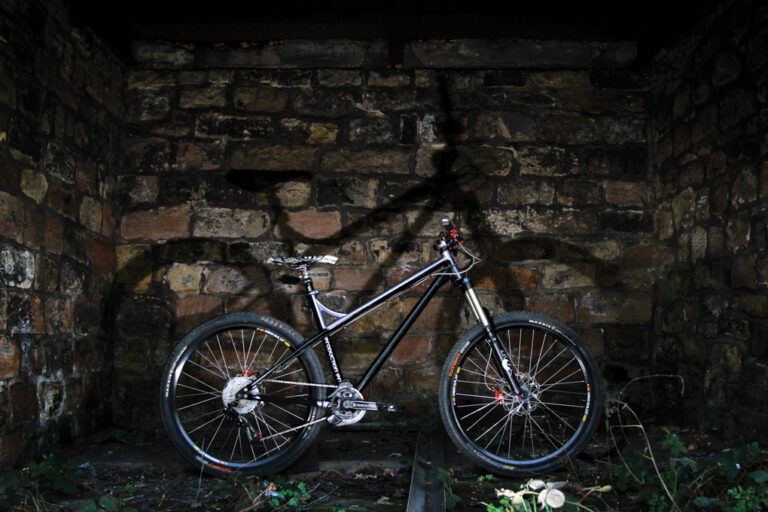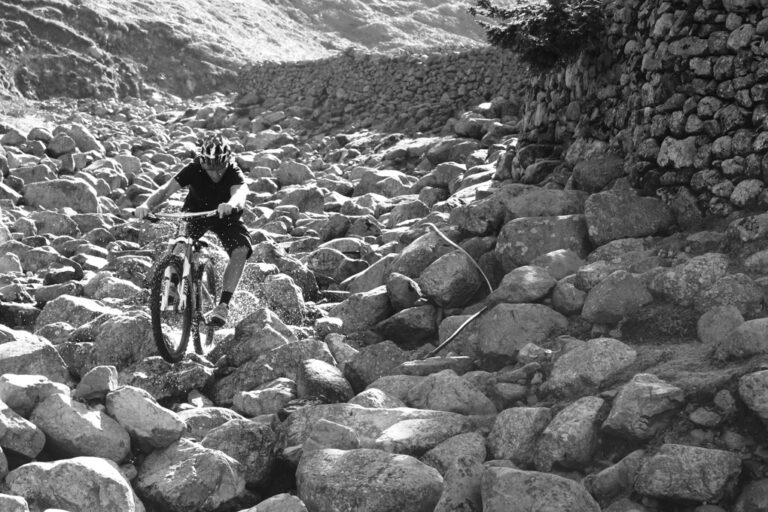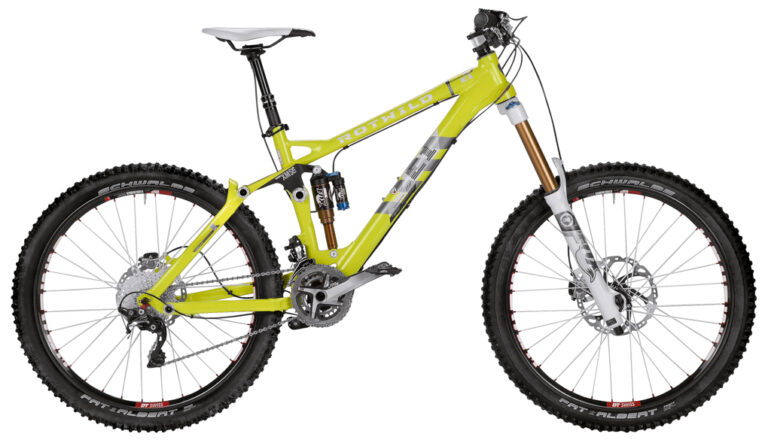
One name, even through tough times, has always remained extremely close to racing – Yeti…
From dirt Issue 110 – April 2011
Words by Steve Jones. Photos by Steve Jones.
Racing teams are not known for their permanence. Few companies can boast dedication to competition at the highest level of downhill since those giddy days of the nineties, a time when it seemed only the Americans (and maybe a couple of French) could hold a straight line. Altitude sickness has been rife in American companies for a large part of the decade. Its changing, but you can be sure one name, even through tough times, has always remained extremely close to racing – Yeti.
 The bike in question here is the Yeti 303 DH Team Issue, but we will ignore for a moment the 25th anniversary turquoise and yellow team colours that go way back to the days of Tomac, Giove and Rockwell of the 80’s and 90’s, and instead concentrate on what exactly you are getting for four thousand three hundred pounds.
The bike in question here is the Yeti 303 DH Team Issue, but we will ignore for a moment the 25th anniversary turquoise and yellow team colours that go way back to the days of Tomac, Giove and Rockwell of the 80’s and 90’s, and instead concentrate on what exactly you are getting for four thousand three hundred pounds.
A frame basically. But a pretty special one with heritage inked onto and within its robust lines and suspension design that deems much of what we get seem a little outdated. Such single mindedness will obviously tempt the collectors for obvious reasons, they already have, it’s hard to imagine this bike might come out in a year or two as a cheaper Far Eastern option.
Who, what or when….who cares. In some ways it’s still every bit as good to ride as its predecessor – an evolution of that barn busting bike of two years ago, the 303 DH. For us an essential bike to ride even if it was simply in order to see just where the famous fellas of Golden were at.
Lets just remember for a moment that the 303 had form – Blenkinsop stormed a super hard Schladming three years ago to take the company’s first World Cup win. After him came Gwin, who certainly added some steely consistency to the Yeti effort. Three World Cup podiums emphasized just how good this bike could be in the right hands and maybe one slider was not far off the two slider version on that bump busting earlier version. How did it ride?
ANGLESThe 303 has a big presence and is definitely no noodle. Everything about this bike has a solidness about it and you’d not loose any sleep with the thought of tackling even the most badly engineered rock sections. A slightly high bottom bracket will certainly avoid any pedal clipping but at the same time also puts rider weight a touch high in the tighter stuff. Downtube and wheelbase numbers are quite small for a bike that sells as a large. Our test bike had a head angle closer to 62º than the stated 64º, but then this was one of the early versions.
 COMPONENTS
COMPONENTS
Build of the Yeti flagged up the importance of set–up on this bike and one area in particular – the fork. With such a friction free rear the danger is to get imbalance in the chassis due to a tight front end. This was something we found in the non–Kashima (coated) and older versions of the Fox 40 that were fitted. Having spent some time on the inverted cartridge Kashima coated 40’s we know there is a whole load more fluidity in the chassis, one of the best forks of the year and so much better than the old versions. In short there was a need for parity because our test bike simply had a superior rear end action.
RIDEIn nearly every situation the 303 responds positively to a good working over. Few of the current batch of production downhill off–the–pegs would match the Yeti in moments of extreme stress and the harder you ride this bike the more the difference over more conventional suspension/chassis designs becomes apparent. The sensation is that the back end is constantly searching, always working out, managing risk or recklessness. The 303 rail is all about movement. But it does need managing.
Not affected by pedaling or braking forces a rider can tailor the wheel path for themselves or the track. An efficient force transfer means less stress on pivots and a constant change in leverage makes it an ideal bike for shock tuning. In practical terms we found it required close attention.
Still, it’s an easier bike to understand in the tight than the old 303 DH with twin rails, tyre weighting is not quite such a vague affair. However, as good as this bike is it’s not quite the bike that its predecessor was on the big breakers. As a collectable the 303 was one of the most rapid gatherers of speed amidst Pacific like troughs. Whatever, it’s still no cheaper, and you’ll still need to work on your offshore account to get one of these Team Issue’s in your shed.
CONCLUSIONThe 303 was a diamond that could really cut it on an unruly bank of action. If there was one bike I could choose as a keeper from the past 20 years that is the bike. The Team Issue follows in that vein. Yet don’t forget the reality. The 303 is a good bike, but it’s not any faster than current production bikes, it’s more about that heritage, individuality and engineering. I’d buy one for those things alone, it’s simply different. No other company challenge technologically how a bike could be, it might be a touch exclusive but it certainly has a handle how to tackle the big terrain.
And in comparison to the 303 RDH – an OK bike in many respects, lively, stable and also with a sliding rail? That kind of lacks the guts and fluidity offered by this bike. It must be a challenge to build given the price but everyone trusts they will continue to search – hopefully one day they’ll make a gem that all of us can afford.
Price: “If you need to know you probably cant afford one”
Contact. www.evolutionimports.co.uk
Thanks to Cwmdown and Fly Up for providing super quick double figure descending






